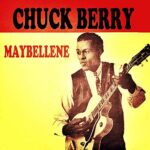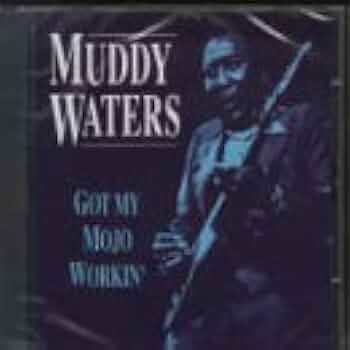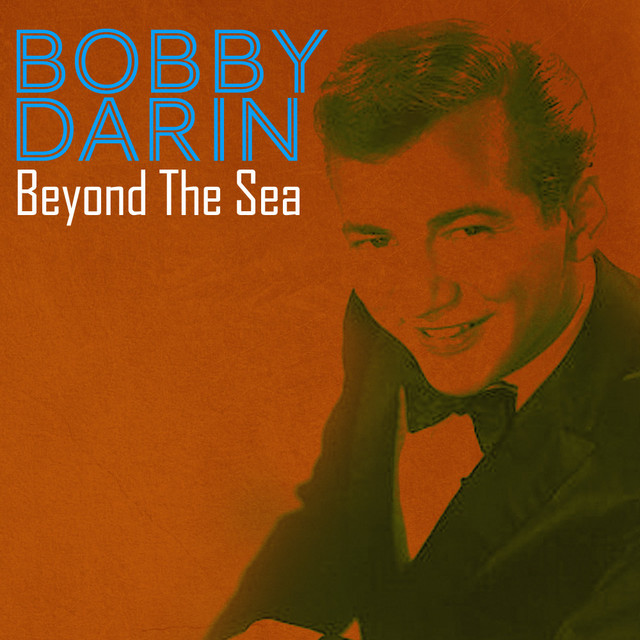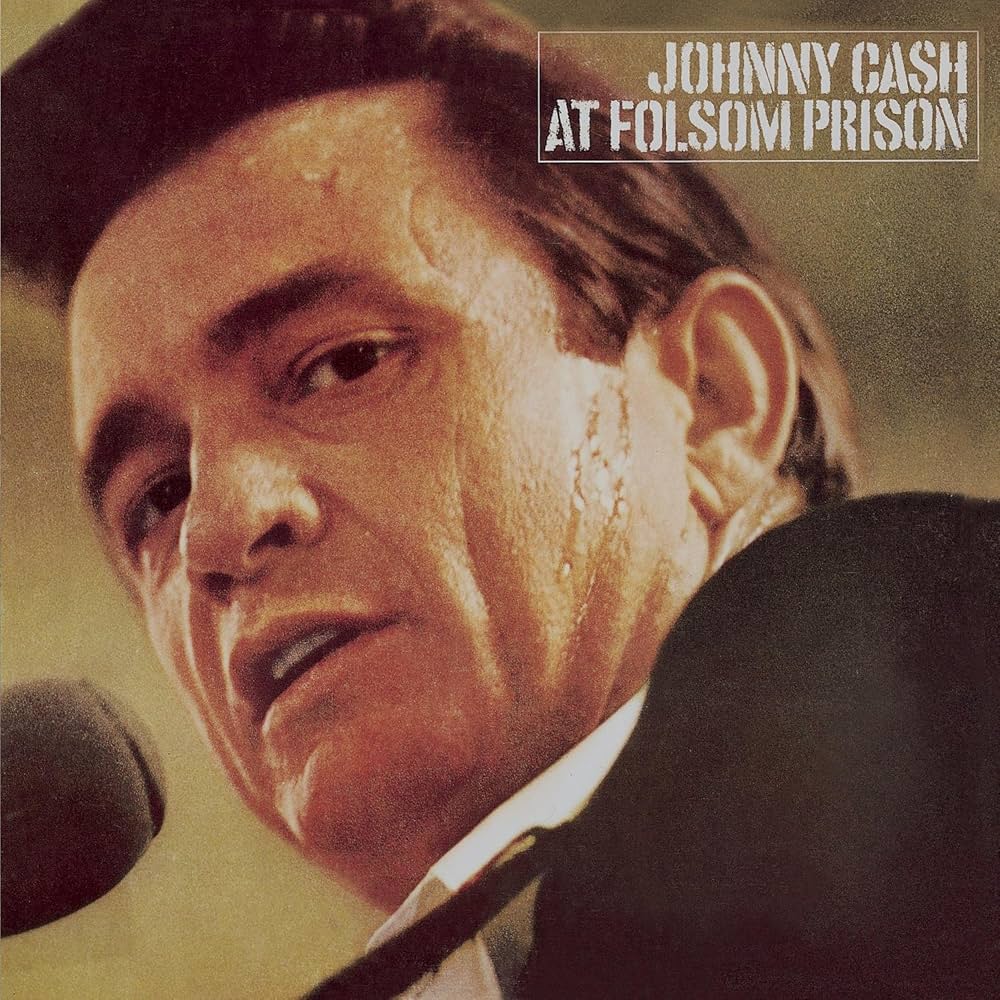 When Chuck Berry released “Maybellene” in July of 1955, the world of popular music was already shifting under the weight of new sounds—blues, country, R&B, and rhythm-driven dance music were colliding in nightclubs and on regional radio stations across America. But nothing quite prepared listeners for the sheer kinetic rush of Berry’s debut single. “Maybellene” didn’t just hint at the coming rock ‘n’ roll revolution—it was the revolution. With its blistering guitar riff, relentless rhythm, and sly, storytelling lyrics, the song set a new standard for what a popular single could sound like. It became one of the first true rock ‘n’ roll hits, reaching No. 1 on the Billboard R&B chart and No. 5 on the Hot 100, and it announced Berry as a groundbreaking figure who would change the course of music forever.
When Chuck Berry released “Maybellene” in July of 1955, the world of popular music was already shifting under the weight of new sounds—blues, country, R&B, and rhythm-driven dance music were colliding in nightclubs and on regional radio stations across America. But nothing quite prepared listeners for the sheer kinetic rush of Berry’s debut single. “Maybellene” didn’t just hint at the coming rock ‘n’ roll revolution—it was the revolution. With its blistering guitar riff, relentless rhythm, and sly, storytelling lyrics, the song set a new standard for what a popular single could sound like. It became one of the first true rock ‘n’ roll hits, reaching No. 1 on the Billboard R&B chart and No. 5 on the Hot 100, and it announced Berry as a groundbreaking figure who would change the course of music forever.
At its core, “Maybellene” is a chase song—both literally and metaphorically. The narrative follows a hot-rod race between the singer’s V8 Ford and the Cadillac Coupe de Ville driven by a woman named Maybellene. Berry spins the story with urgency, his voice cracking with excitement as he tries to keep up with his wayward love, who is not only outrunning him on the highway but also, it seems, in romance. The lyrics are deceptively simple, painting a vivid picture of smoking engines, overheated radiators, and a woman who is always just out of reach. “As I was motivatin’ over the hill / I saw Maybellene in a Coupe de Ville,” Berry sings, and from the very first line, the listener is thrown into motion. The chase is physical—cars tearing up the road—but it’s also emotional, symbolizing a young man’s pursuit of love, freedom, and the thrill of the open road.
That theme of speed and liberation was perfectly suited to postwar America. In the mid-1950s, car culture was exploding. Automobiles were no longer just a means of transportation; they were symbols of youth, independence, and status. Drive-in diners, drag races, and hot rod competitions captured the imagination of teenagers across the country. Berry, who grew up in St. Louis and was well aware of the allure of cars to young people, tapped into this fascination with precision. His lyrics name-check V8 Fords and Cadillacs, grounding the song in the very real world of American highways and car culture. This attention to detail gave “Maybellene” an authenticity that resonated with young listeners who were beginning to see cars as extensions of their identity.
But as exciting as the story is, it’s the sound of “Maybellene” that truly changed music. From the first snarling guitar intro, Berry’s signature style is on full display: sharp, staccato chords, bluesy double-stops, and a relentless backbeat that pushes the song forward like a speeding engine. Berry’s guitar wasn’t just an accompaniment—it was the lead instrument, carrying the melody and setting the rhythmic tone. This was a radical shift at the time, when most popular songs were dominated by smooth vocals, piano, or big band arrangements. Berry put the electric guitar front and center, defining the sound of rock ‘n’ roll for generations to come. His playing on “Maybellene” is both raw and precise, a perfect marriage of country twang and R&B grit, and it inspired countless young musicians—from Keith Richards to George Harrison—to pick up a guitar and start a band.
The recording of “Maybellene” itself is a fascinating story of musical cross-pollination. Berry originally wrote the song as “Ida Red,” a reworking of a traditional country fiddle tune that he had been performing in clubs. When he brought it to Chicago’s Chess Records, label co-founder Leonard Chess suggested a new title and worked with Berry to shape the arrangement. The result was a masterful fusion of musical styles: the driving rhythm and guitar riffs came from R&B and blues, the narrative storytelling owed a debt to country and western, and the up-tempo beat was pure rock ‘n’ roll energy. This blending of black and white musical traditions was groundbreaking in the racially segregated America of the 1950s. “Maybellene” didn’t just break musical barriers; it challenged cultural ones, reaching audiences across racial lines and helping to integrate popular music.
Berry’s vocal delivery added another layer of excitement. He sings with a sense of urgency that matches the racing cars in the story, his words tumbling out in a rapid-fire cadence that anticipates the rhythmic phrasing of later rock and even rap. There’s a sly humor in his performance, too—when he laments the “cooling down of my motor” or complains about Maybellene’s “Cadillac rollin’ on the open road,” you can hear both frustration and delight. Berry wasn’t just a singer; he was a storyteller, using his voice to bring the chase to life and make the listener feel every turn of the road. His diction, clear and rhythmic, made the song accessible to white and black audiences alike, broadening its appeal and ensuring its place on both R&B and pop charts.
The impact of “Maybellene” was immediate and profound. Released in the summer of 1955, it shot up the charts, selling over a million copies and establishing Berry as one of the first black artists to achieve mainstream success with a rock ‘n’ roll song. DJs across the country played it on both R&B and pop stations, introducing white teenagers to the electrifying energy of black music. For many listeners, “Maybellene” was their first taste of what would soon be called rock ‘n’ roll—a sound that felt rebellious, youthful, and utterly new. The song’s success also opened doors for other pioneering artists like Little Richard, Elvis Presley, and Buddy Holly, who would carry the rock ‘n’ roll torch into the late 1950s and beyond.
What’s remarkable is how fresh “Maybellene” still sounds today. The recording, done on relatively primitive equipment at Chess Studios, crackles with live energy. The rhythm section pounds out a relentless backbeat, the guitar snarls and twangs, and Berry’s voice rides on top like a daredevil driver taking corners at full speed. There’s no studio polish, no elaborate production—just raw, unfiltered excitement. This immediacy is part of what makes the song timeless. Whether you’re hearing it on a scratchy 45 or a digital playlist, “Maybellene” jumps out of the speakers with the same thrilling power it had in 1955.
The song’s influence on future music cannot be overstated. Every major rock guitarist of the next generation, from the Rolling Stones’ Keith Richards to the Beatles’ John Lennon, has cited Berry as a key inspiration. Richards once famously said that Berry was the one who “laid the law down for playing rock ‘n’ roll guitar,” and “Maybellene” is Exhibit A. The song’s intro riff became a template for countless rock songs, and its blend of blues scales with country picking created a vocabulary that guitarists still use today. Beyond guitar technique, Berry’s approach to songwriting—telling relatable stories about cars, love, and teenage life—became a blueprint for rock lyrics. Songs like the Beach Boys’ “Fun, Fun, Fun,” the Beatles’ “Drive My Car,” and Bruce Springsteen’s “Racing in the Street” all trace their lineage back to the road Berry paved with “Maybellene.”
“Maybellene” also represents a key moment in the social history of rock ‘n’ roll. In 1955, America was still deeply segregated, and many radio stations were reluctant to play music by black artists for white audiences. But the sheer appeal of Berry’s music forced those barriers to crack. Teenagers, black and white alike, were drawn to the excitement of rock ‘n’ roll, and songs like “Maybellene” made it impossible to ignore the growing cultural movement. The record’s crossover success helped lay the groundwork for the civil rights-era integration of popular culture, proving that music could be a powerful force for breaking down racial divisions.
Over the decades, “Maybellene” has remained a staple of rock history. It has been covered by artists as diverse as Elvis Presley, Carl Perkins, and Johnny Rivers, each bringing their own flavor to the song while preserving its essential energy. It was included in the very first group of recordings inducted into the Grammy Hall of Fame and has been honored by the Rock and Roll Hall of Fame as one of the “500 Songs That Shaped Rock and Roll.” These accolades are more than just trophies; they’re recognition of the song’s foundational role in shaping an entire genre.
Chuck Berry himself often spoke of “Maybellene” with pride, acknowledging that it was the song that launched his career and helped define rock ‘n’ roll. Yet he also understood that its power came from more than just a catchy melody or clever lyrics. It captured a feeling—a restless, speeding sense of freedom that spoke directly to the hopes and desires of young people in postwar America. In the sound of that racing guitar and pounding beat, listeners heard the thrill of breaking free from the constraints of the past and racing toward a future of their own making.
Listening to “Maybellene” today is like taking a joyride in a vintage hot rod. The engine roars to life with the opening riff, the tires grip the asphalt as the rhythm takes hold, and before you know it you’re hurtling down the highway, chasing something just out of reach. Maybe it’s a lost love, maybe it’s the pure thrill of speed, or maybe it’s the elusive dream of freedom that has always defined the best rock ‘n’ roll. Whatever it is, Chuck Berry captured it in three minutes of music that still feels as urgent and exhilarating as it did the day it was recorded. With “Maybellene,” Berry didn’t just write a hit single—he built the engine that would drive rock ‘n’ roll for decades to come.


